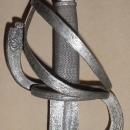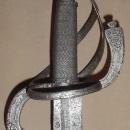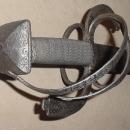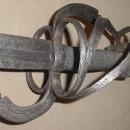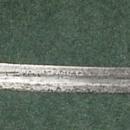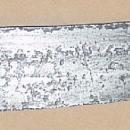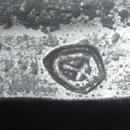Styrian (Austria) Dusegge, Sinclair Sabre, Late 16th C
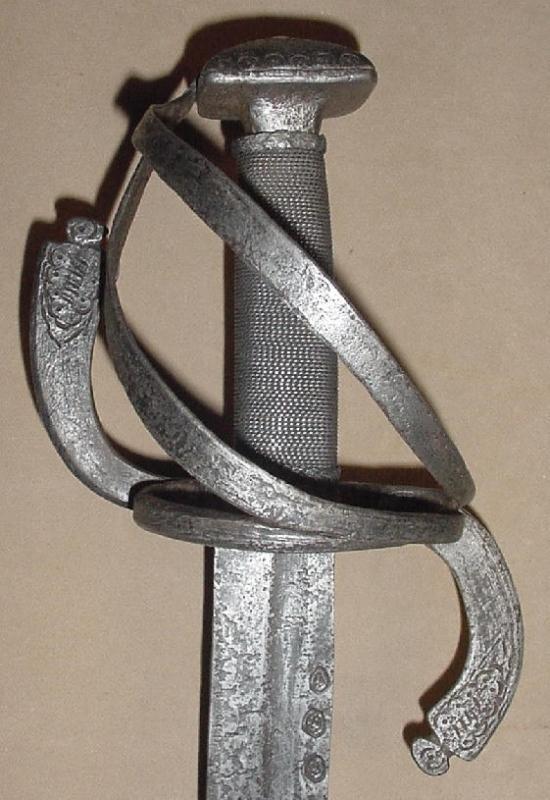
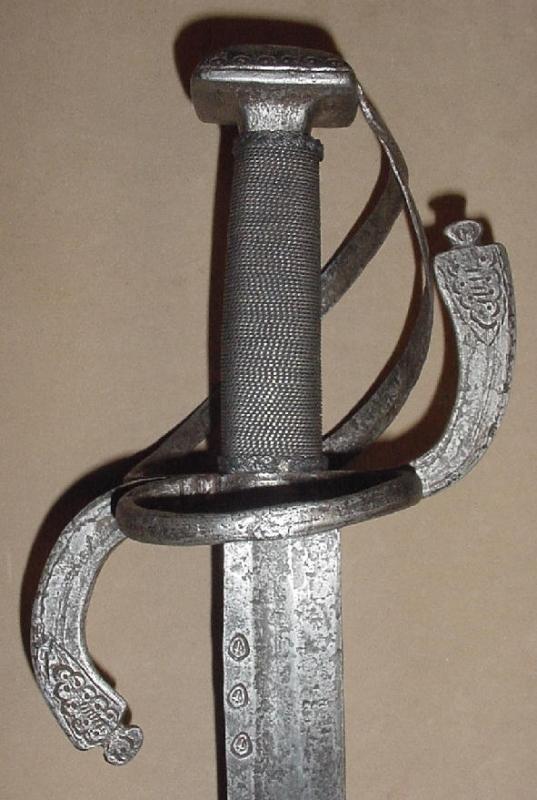
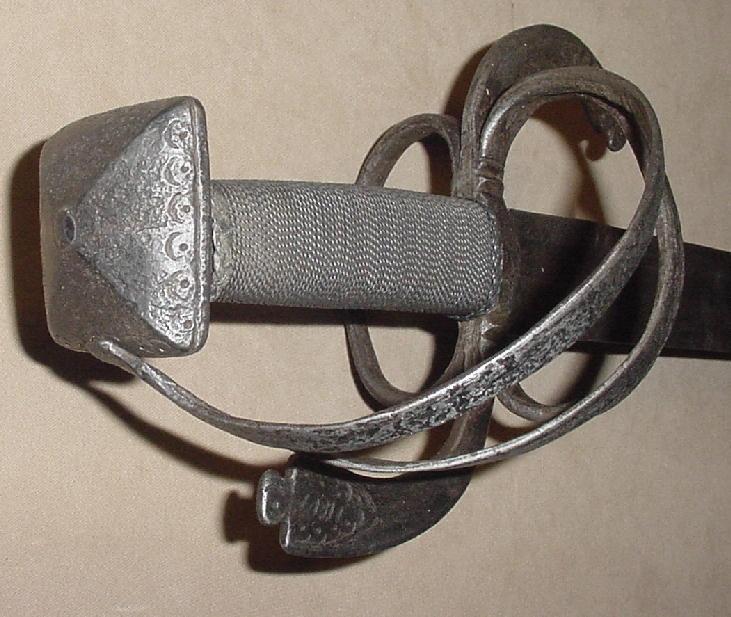
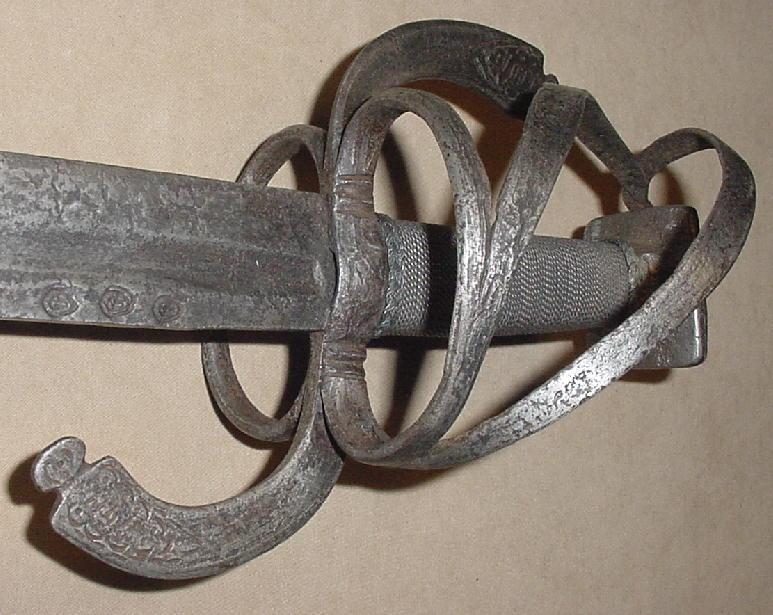


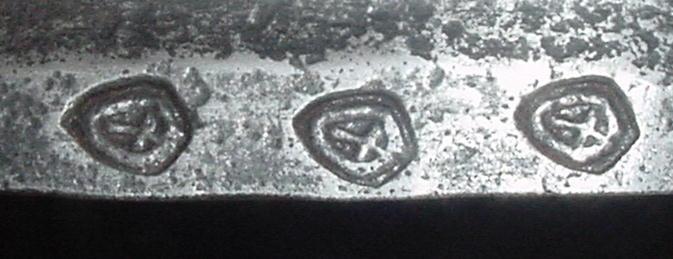
The dusegge is a basket-hilted sword unique to Southern Germany, Austria, and Hungary. The curved blade is patterned after the blades of the Ottoman Turks, whom they battled with for centuries. Many of these swords can be found in the arsenals of Austria, especially Styria, and can be seen today at the Landsmuseum in Graz. They were a very effective slashing weapon favored by light cavalry. In Britain they are sometimes called a "Sinclair Sabre", because a group of mercenaries led by Scottish Colonel Sinclair purportedly carried this type of weapon on their il-fated expedition to Scandinavia. They were attempting to join the forces of Swedish King Gustavus Adolphus during the Kalmar War in 1612 when they were ambushed and annihilated at the Battle of Kringen in Norway. It is said that Sinclair was the first to fall. This example features a hilt of forged laminated flat iron bars, comprising double side rings, vertically recurved quillons, and two sweeping bars extending from the obverse side ring and joined to the pagoda-form pommel. A simple design is chiseled into the quillon finials and around the edges of the pommel. Grip has twisted iron wire wrap with turks heads. Broad 29" curved blade with full length central fuller, expanding toward the point and double edged for the last 10". Three deeply stamped marks of a cross in an oval are stamped on the ricasso on both sides. Metal surfaces pitted overall; showing lamination and somewhat crude forging. A relatively scarce style of sword in good condition. Overall length 34 3/4". This style of basket hilt predates the basket-hilted swords of Scotland and could be the forerunner of their designs.
